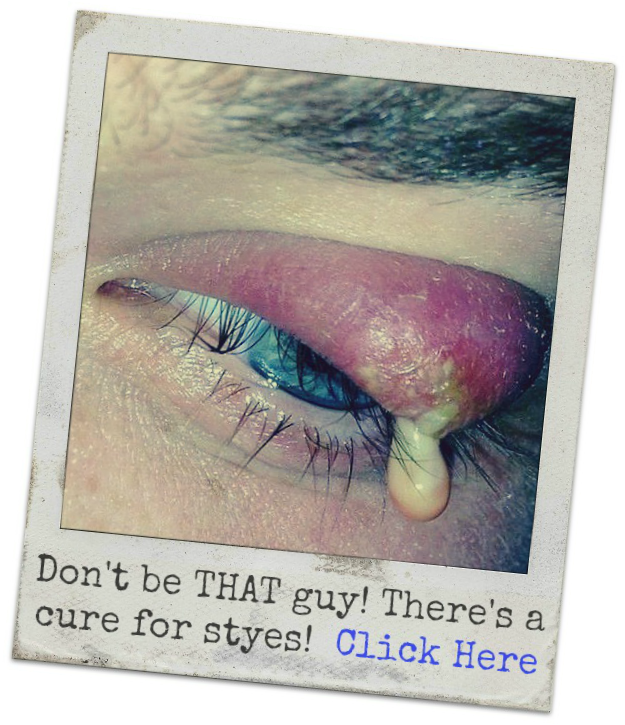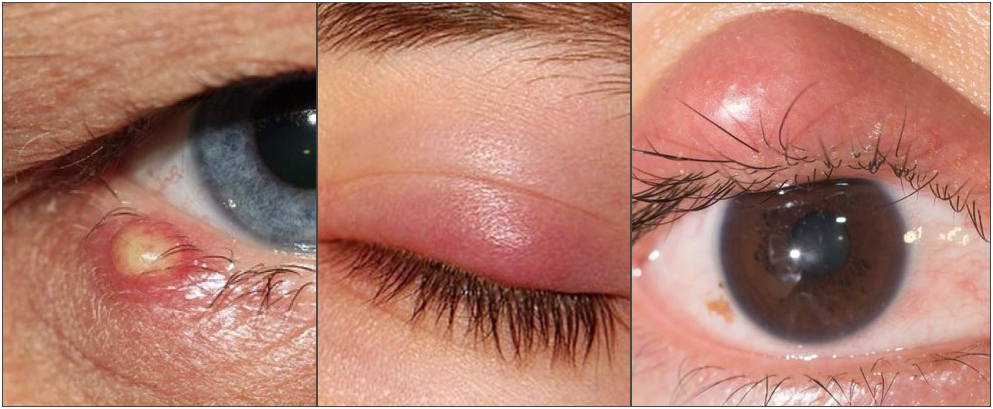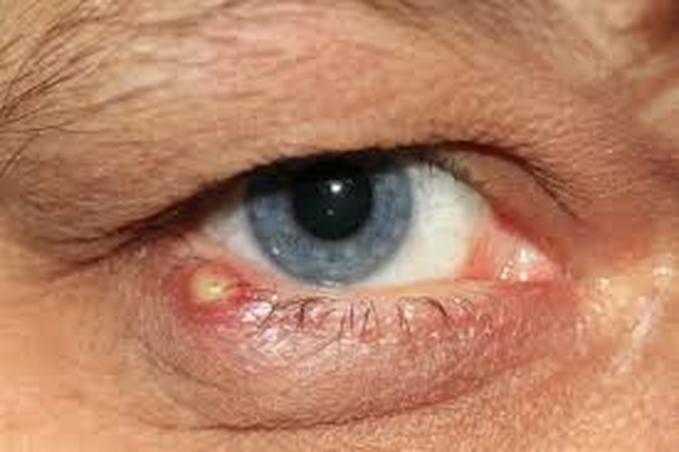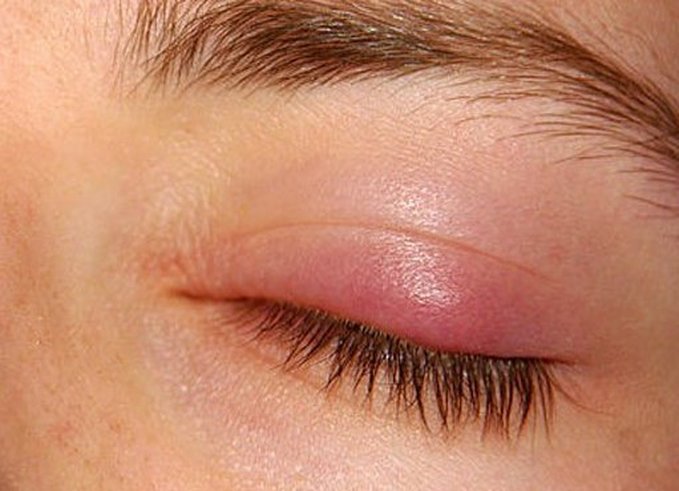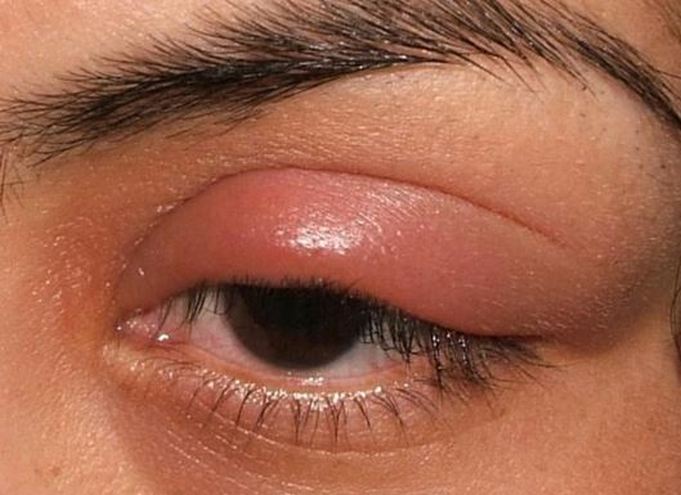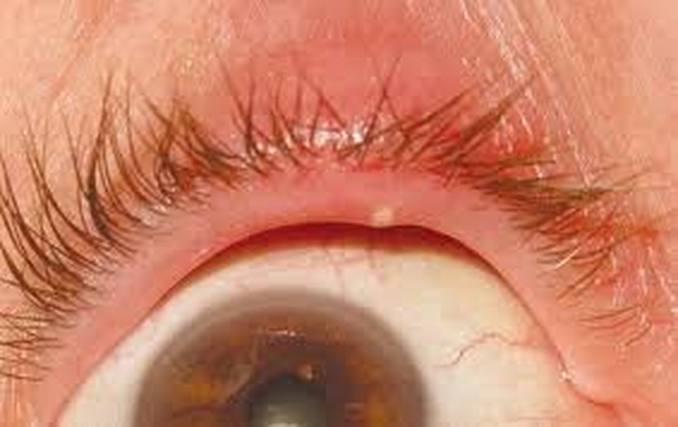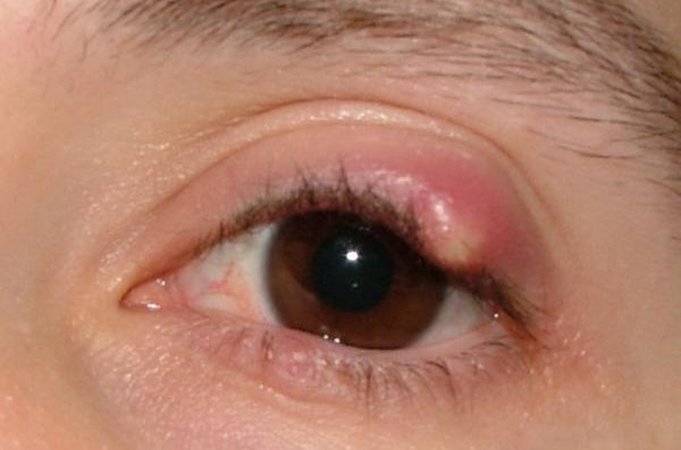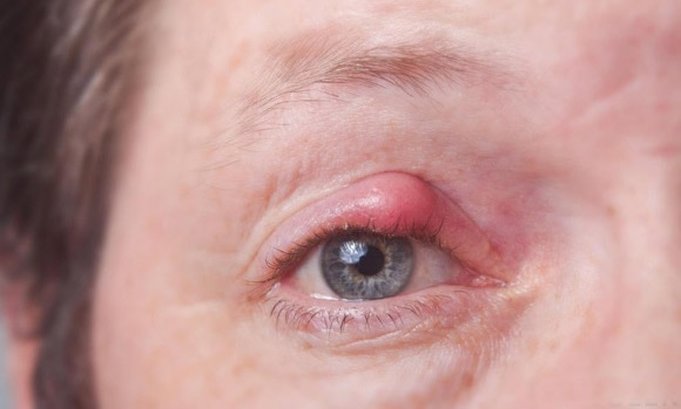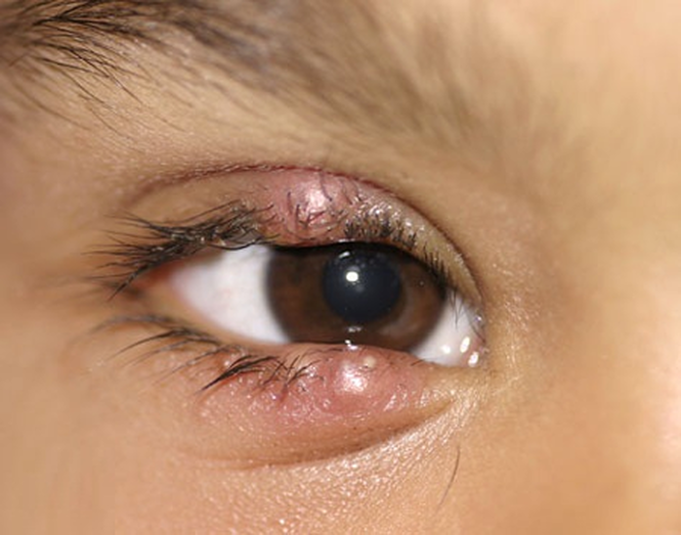PICTURE OF STYE / CHALAZION
The difference between a stye and chalazion are often misunderstood. But looking at a stye photograph or an image of a chalazion can make it easier to diagnose which one you suffer from. There are a wealth of pictures on this page to help you identify the nature of your illness.
STYE VS CHALAZION
To clarify, a stye is an inflamed, painful swelling that forms in the eyelid. There are two types of styes, internal stye and external stye. External styes form on the edge of an eyelid, and is usually caused by bacterial infection of the gland at the base of an eyelash. Internal styes are deep-seeded, usually caused by staphylococci, and affects the meibomian gland.
Both internal and external styes form a pus sac, much like a whitehead pimple. Since external styes form near the surface of the eyelid, they tend to come to a head and burst rather quickly (3 to 7 days).
Internal styes are deep-seeded and do not easily come to a head like a whitehead pimple. As a result, the pus sac that forms remains there and either breaks open within a few weeks, dissolves over the course of 6 months to a year, or requires surgery to remove it.
When the pus sac doesn’t come to a head or burst, it’s termed a chalazion. A chalazion is nothing more than an unhealed stye that did not burst. For reference, only an internal stye can become a chalazion.
In the images below are pictures of styes and chalazions at different stages of their life. Some of the pictures might represent a stye that’s 2 day old or 5 days old. Styes typically last no longer than 7 days but its pus sac can remain for much longer. Again, the pus sac is not the stye, it’s the remains of they stye, or termed a chalazion. Also see stye pictures.
Both internal and external styes form a pus sac, much like a whitehead pimple. Since external styes form near the surface of the eyelid, they tend to come to a head and burst rather quickly (3 to 7 days).
Internal styes are deep-seeded and do not easily come to a head like a whitehead pimple. As a result, the pus sac that forms remains there and either breaks open within a few weeks, dissolves over the course of 6 months to a year, or requires surgery to remove it.
When the pus sac doesn’t come to a head or burst, it’s termed a chalazion. A chalazion is nothing more than an unhealed stye that did not burst. For reference, only an internal stye can become a chalazion.
In the images below are pictures of styes and chalazions at different stages of their life. Some of the pictures might represent a stye that’s 2 day old or 5 days old. Styes typically last no longer than 7 days but its pus sac can remain for much longer. Again, the pus sac is not the stye, it’s the remains of they stye, or termed a chalazion. Also see stye pictures.
PICTURES OF STYES
External Stye: The picture above is an image of external stye. External styes form close to the edge of the eyelash and have an appearance to that of a whitehead pimple. This external stye in the pic above is about 6 to 7 days old. There is typically not much swelling, pain or redness associated with external stye as compared to internal stye.
Internal Stye: The picture above represents an internal stye and it’s about 2 days old. At this stage of the stye, there is some pain and redness associated with it. There is not much swelling associated with it yet. But internal styes usually begin to swell severely after the second day, and continue to swell for about 3 or 4 days.
Internal Stye: The photo above represents an image of an internal stye that is roughly 4 or 5 days old. At this stage of the stye there is redness, moderate to sever swelling and often moderate pain. Often a white/yelloish pus sac starts to become visible with a flashlight by flipping the eyelid.
Internal Stye: The picture above is an image of an internal stye beginning to surface at the gland opening, making it look like an external stye. However, it is not an external stye. Internal styes rarely surface at the edge of the gland opening.
Internal Stye: The picture above is an image of an Internal stye that looks much like an external stye. The pus sac of an internal stye usually surface on the inside of the eyelid and burst in the eye. However, internal styes can sometimes come to a head on the outside of the eyelid, giving it the appearance similar to that of an external stye.
PICTURES OF CHALAZIONS
Chalazion: The picture above is an image of a chalazion. A chalazion begins as an internal stye. As the internal stye grows it forms a pus sac. If the pus sac doesn’t burst it becomes a chalazion. A chalazion can last several weeks or a year. Often requiring a surgical procedure to remove it.
Chalazions: It’s not uncommon to have two styes/chalazions at once. It’s also not uncommon to have one stye/chalazion in both eyes at the same time. When a person has multiple styes/chalazions or reoccurring styes, it’s often a sign of a medical condition. It’s recommended to download the ebook from this site to learn how to cure this condition.
